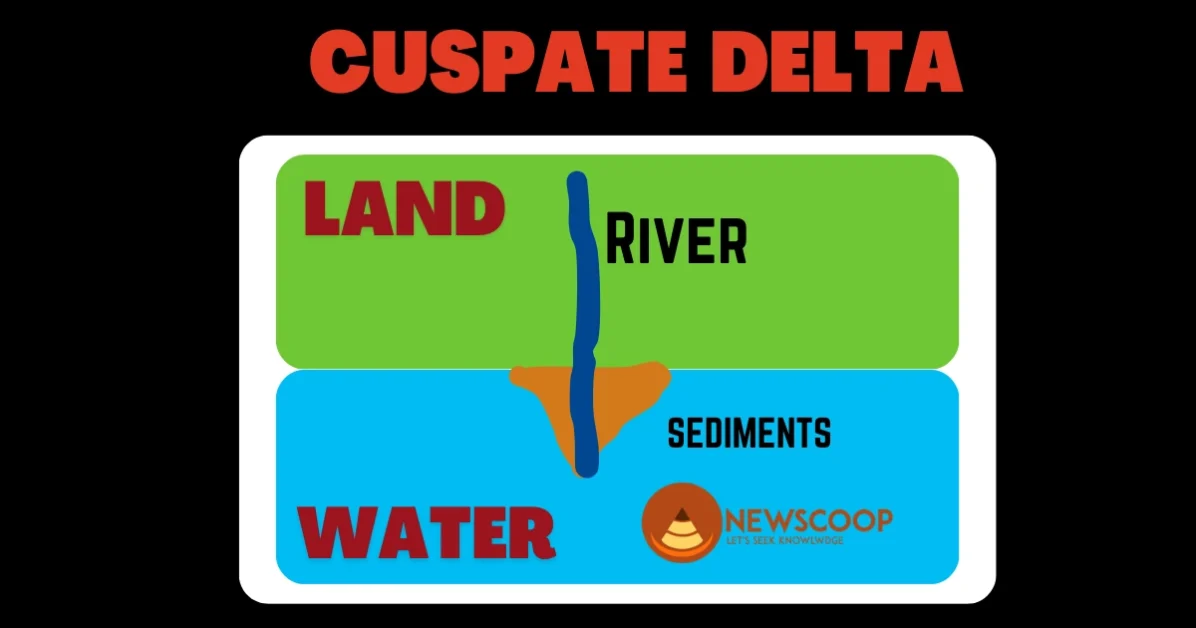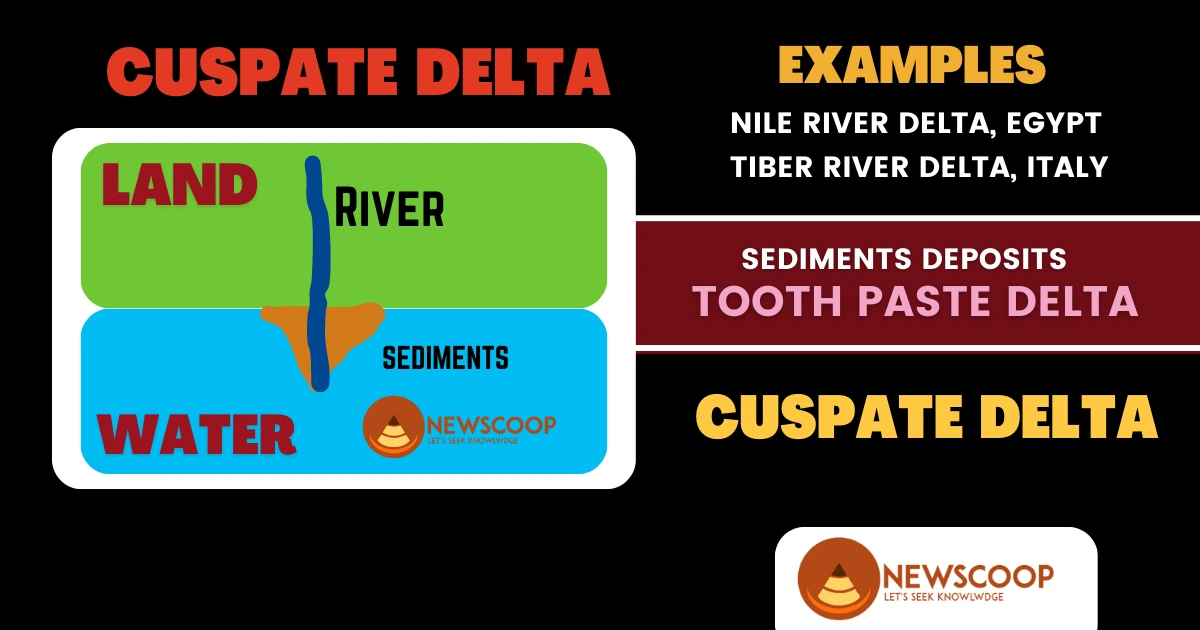Cuspate Delta’s: Meaning, Formation and Examples
Nature is incredibly creative, and it has made something fascinating called the cuspate delta. This unique geological formation captivates geographers and nature lovers.
In this article, we’ll explore cuspate deltas, how they are formed, what makes them special, and some famous examples. We’ll also see how they affect coastal landscapes in a significant way. So, get ready to be amazed by the wonders of nature!
Cuspate Delta’s
Cuspate deltas are formed through a delicate dance between rivers, waves, and currents. These deltas emerge in coastal areas where two opposing coastlines converge, or where the longshore drift carries sediments in a pointed manner. The apex of the delta faces the direction of the dominant wave and current action, while its concave sides create a triangular or pointed shape (Tooth-shaped delta).

Characteristics of Cuspate Delta’s
- Triangular Beauty: Cuspate deltas exhibit a distinct triangular or cuspate shape, setting them apart from other delta formations.
- Elongated Extensions: These deltas often extend far into the sea, showcasing the dynamic interplay of the river’s sediment deposition and coastal forces.
- Wave-Dominated Coasts: They are commonly found in areas with strong wave patterns and currents, which significantly influence their formation.
Notable Examples of Cuspate Delta’s
- Nile River Delta, Egypt: One of the most famous cuspate deltas in the world, the Nile River Delta is formed by the deposition of sediment from the Nile River into the Mediterranean Sea. Its majestic shape is a testament to the millennia-long interactions between the mighty river and the Mediterranean waves.
- Tiber River Delta, Italy: The Tiber River Delta exemplifies the beauty of cuspate deltas on a smaller scale. Located in central Italy, this delta showcases the intricate relationship between the Tiber River and the Tyrrhenian Sea.
Impact on Coastal Landscapes
Cuspate deltas play a vital role in shaping coastal landscapes and ecosystems. Their elongated extensions serve as protective barriers against coastal erosion and storm surges, safeguarding the land behind them from the relentless force of the ocean.
Additionally, these deltas act as vital habitats for diverse flora and fauna. The intricate network of water channels, marshes, and wetlands provides crucial breeding grounds and sustenance for various species, fostering biodiversity and ecological balance.
Conclusion
Cuspate deltas stand as a testament to the harmonious dance between rivers and coastal forces, creating magnificent triangular masterpieces along the world’s coastlines. Their beauty and ecological importance highlight the intricate connections between human and natural systems.
As we continue to explore and understand these geological wonders, it becomes ever more vital to safeguard and appreciate the delicate balance between nature’s artistry and human interaction along our diverse coastlines.
Thank You!

